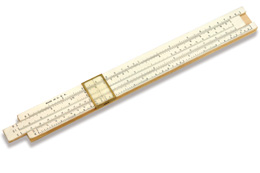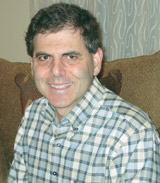Volume 24 · Number 3 · Spring 2007

Aggies Remember
The lasting lessons had nothing to do with moles, titration or chemical analysis.
Not long ago, I experienced the joy of watching my youngest child, Sarah, graduate from college. The happiness of this milestone is somewhat bittersweet, as another major phase of my life has drawn to a close: I no longer have any children in school. One thing I will miss in particular is hearing about her courses. Each quarter, she would tell me about her classes and the things she was learning. Journalism and economics courses made up the bulk of her curriculum. I heard about factual aspects of each of these subjects in intimate detail, quarter after quarter.
I finally asked her toward the end of her senior year, “So, what did you really learn in college?” After receiving a somewhat quizzical look I said, “How much of your course material do you think you will remember in 10 or 20 years?”
Sadly, the answer is probably very little, I told her. The real prize is in going through the process. She learned things in those classes that she hasn’t yet realized. In my case, the most important course I took in college is one from which I remember no more than 5 percent of the material. Chem 5, taught by Dr. Charles Nash in the fall of 1973, taught me more than any other course I took at UC Davis.
In high school and my freshman year at UC Davis, I had little difficulty in mastering course material and doing well on exams. As a genetics major, I had to take several chemistry courses. But nothing had prepared me for the rigors of Chem 5, a course in quantitative analysis, which I took at the beginning of my sophomore year. The course material was challenging, to say the least. Lugging my five-pound textbook to the library became a frequent ritual, as did the seemingly endless use of my slide rule and rudimentary calculator in trying to solve the homework problems. The lab exercises demanded incredible degrees of precision. One little mistake, and you started all over again. And if the course work wasn’t hard enough, the midterm exams were the worst of all. Many students would receive a “0” on the exam; average scores were usually in the 30s or 40s. Getting 50 percent right was a real accomplishment. There was never a worry about adding Chem 5 to one’s schedule if a student was not initially enrolled. After the first midterm, many students dropped the class, so there was plenty of room. This course was the stuff of which exam anxiety dreams are made.
I will never forget the feeling of quietly panicking as I would look at each of the five or so questions that were asked on the midterms and, initially, have no idea how to solve any of them. But after getting over the initial shock of reading the questions, ideas would start to emerge. Try this equation; try to get the units to balance; put down whatever you could think of. Slowly, scattered concepts would begin to coalesce, and in the end, a reasonable solution to the question could be constructed. Little did I realize at the time that what I was learning had really nothing to do with moles, titration, chemical analysis and such.
I began to understand many years later the true lessons of Chem 5: how to think under pressure and to not panic when a course of action is not readily apparent. Pay attention to detail so tasks don’t need to be repeated (my surgical patients especially appreciate this one). Report the result that you get, even if there is doubt and uncertainty about it at the time. The solution to problems and decisions in one’s life and career are not always immediately obvious and become clear only over time as mental effort is applied. Mental toughness, tenacity and resiliency are important abilities to possess. These are the important lessons that my daughter has learned while in college but hasn’t realized yet.

I saw a picture of Dr. Nash in an issue of UC Davis Magazine not too long ago and e-mailed him to thank him for the lessons I learned from Chem 5. And do you know what? He replied to tell me that he knew what he was really teaching his students all along. Dr. Nash retired some years ago, and I don’t think Chem 5 as a stand-alone course exists anymore. I hope that other seemingly impossible courses in many subjects that teach these important lessons have taken its place at UC Davis.
Charles Cooper ’76 is a physician specializing in pediatric ophthalmology with a private medical practice in Thousand Oaks. He and his wife of 32 years, Nanci ’76, have a 26-year-old son, Ben, and a 23-year-old daughter, Sarah.
